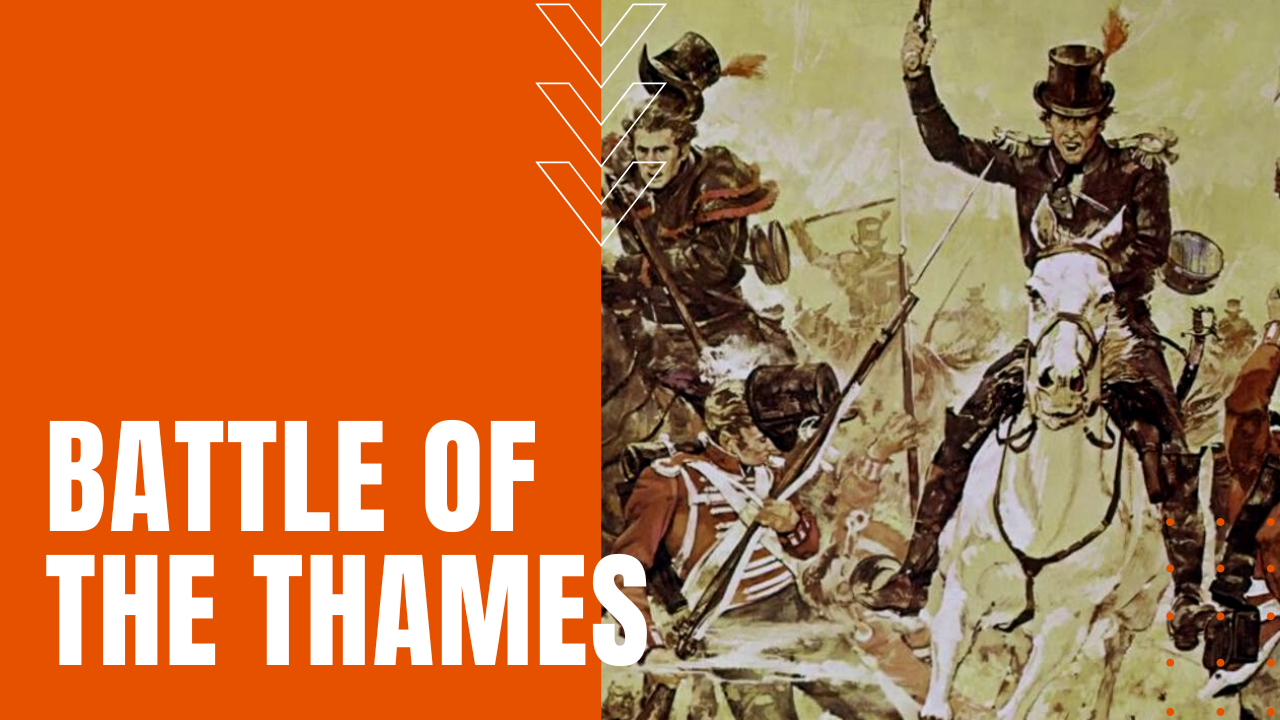Battle of the Thames: Moraviantown, Tecumseh, and American Victory

After the American’s loss of Fort Detroit by bluff and deception during the first year of the War of 1812, British ground forces supported by an alliance of Native American tribes forged by Shawnee leader Tecumseh, maintained their early dominance in the Great Lakes Region, due to a blockade of Lake Erie by the British Royal Navy.
Blockade and Battle of Lake Erie
By July of 1813, however, the U.S. Navy under the command of Master Commandant Oliver Hazard Perry had constructed its own squadron of ships at Presque Isle Bay.
While British Commander Robert Heriot Barclay kept the Americans pinned down at Presque Isle Bay, and when Barclay lifted his blockade for a two-day naval resupply, on September 10th, nine American warships routed the British in the Battle of Lake Erie, which would prove to be one of the largest naval engagements of the war.
Perry soon installed a counter-blockage at Amherstburg Ontario, some 20 miles south of present-day Detroit, sending a hastily written note to the future president and U.S. Army Maj. Gen. William Henry Harrison, stating that “We have met the enemy and they are ours,” prompting Harrison to advance along the shores of Lake Erie in an attempt to recover Fort Detroit, as well as an anticipated capture of Fort Malden from the British.
Tecumseh and the Thames
At the same time, with his resupply line lost in the Battle of Lake Erie, British Maj. Gen. Henry Procter and Tecumseh’s warriors initiated a badly managed retreat, forcing increasingly demoralized British soldiers to march on half rations up the Thames River to Moraviantown, which at the time housed a settlement of Lenape Indians who had fled their homelands in the United States.
On October 4th, 1813, Harrison led a contingent of 1,000 cavalrymen and 2,500 foot soldiers from Sandwich Ontario, catching up with the rear guard of the British retreat near Chatham, where Tecumseh’s warriors were quickly overwhelmed in their attempt to slow the American line. The next day, after catching up with the main British force along the Thames River, Harrison ordered a frontal assault on a half-starved British line, prompting the bulk of Proctor’s men to either flee the field or lay down their arms in surrender.
Unwilling to capitulate, Tecumseh and his men fought on, leading to the death of Tecumseh and the eventual collapse of his hard-won alliance between Native American tribes. While casualty figures vary widely depending on multiple eyewitness sources, the Great Lakes Region would remain in American control for the remainder of the war, making the Battle of the Thames an important morale boost in America’s second and final war with the British.
